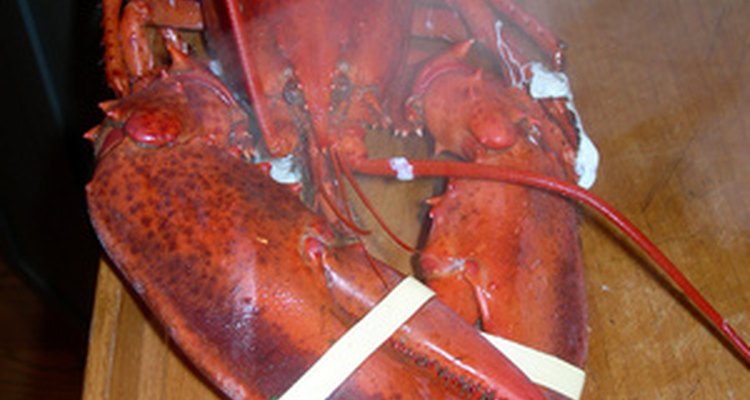
Getting boiled alive is a tough way to go, but that is the preferred method for cooking lobster. Cooks typically hear what sounds like a scream when the lobster hits boiling water. But lobsters have no vocal chords or throats. That sound you hear isn't screaming. It's the sound of air, expanding as it heats, rushing from the lobster's body.
The Noise of Escape
Lobster usually will continue moving for one to two minutes when dropped into the pot. During that time, they do lots of stuff that makes it seem like they are trying to get out. They try to knock the lid off the pot. They even spread their claws over the rim in an apparent effort to prevent being placed in boiling water. There is noise associated with all of these actions.
Do Lobsters Feel Pain?
Lobsters can't talk, so there's no way of knowing if they really feel pain the way we do. Of course, trying to escape and cringing at the lid of a pot sure makes it seem like they feel pain. But anesthetized humans will also flinch at pain, even though they cannot feel it. According to the University of Washingtons Neuroscience for Kids page, "some invertebrates can lose a limb without showing any change in behavior. To many scientists, this indicates that these animals do not feel pain like humans."
Cruelty-Free Cooking
Of course, there are those who believe that the thrashing of a lobster in a boiling pot is evidence of pain. Chefs have devised numerous ways to minimize the cruelty of cooking live lobster. The Lobster Institute at the University of Maine says the lobsters will stop twitching after 30 seconds if you place them on ice or freeze them prior to boiling.
Methods That Don't Work
If you are serving squeamish diners, the type that don't want to think of lobster suffering, steaming lobsters reduces movement faster than other methods, but lobsters on top of others live for as long as 20 minutes. Hypnotizing lobsters by rubbing a lobster's head doubles the time it moves in the pot. Dropping the lobster in cold water and bringing it to a boil usually makes the lobster move for three minutes, according to the Lobster Institute, which experimented on lobsters.
Related Articles

How to Boil 1.5 Pounds of Lobster

Why are Lobsters Cooked Alive?

Difference Between Boiled & Grilled ...
How to Prepare and Cook Frozen Lobsters

How to Cook Crab Claws

How to Boil Lobster at Home

How Often Do Lobsters Shed Their ...

How to Steam a Quahog

Thawing Lobster Tails

How to Cook Clams in the Shell
How Do I Reheat Leftover Boiled Lobster?
Crawdad Cleaning, Cooking, & Eating

How to Prepare Live Shrimp

Step-by-Step Instructions for Boiling ...
Do I Steam or Boil Shrimp?

How to Cook Mussels & Clams Together

How to Cook Vietnamese Rice Stick ...
How Long Does it Take to Boil Frozen ...

How to Cook Fully Frozen, Whole Lobster ...

When Does a Lobster Molt?
References
Writer Bio
Philadelphia-based freelancer Pat Kelley has been writing since 2002, most recently for Scripps Texas Newspapers. He has won numerous awards for reporting. He holds a Bachelor of Arts in political science.
Photo Credits
lobster image by jedphoto from Fotolia.com